The KW Reflex-Box camera doesn’t have the rarity or notoriety as Hasselblad or Leica. However, it’s a fun example of a mix between a reflex and a box camera that never caught on. It never reached the sales to justify keeping this type in the line up of the camera company.
Company History.
The KW Reflex Box camera was manufactured by Kamera-Werkstätten Guthe & Thorsch, in Dresden, Germany. KW is what they are mainly known. The company was started by Paul Guthe and Benno Thorsch in 1919, just after WWI, where they focused on making cameras and associated photo products. Germany has always been a top-rated camera and optical manufacturing country, but Dresden seemed to have the majority, with Ihagee, Pentacon, Zeiss Ikon, Altissa, and several others.
The story of Paul Guthe and Benno Thorsch is an exciting tale. Before WWII, Benno Thorsch wanted to immigrate to the United States and placed an advertisement to that effect in Dresden. Charles Nobel, who ran a successful film processing business in Detroit, MI, answered the ad while visiting Dresden. They both agreed to exchange their interest in their respective companies. Benno Thorsch moved to the Detroit Area. Charles Nobel moved to Dresden in 1938, where he rebuilt the factory in southern Dresden and renamed the company Kamera-Werkstätten AG, Dresden-Niedersedlitz.
They were able to keep manufacturing through WWII, but in 1945, Charles Nobel and his son were arrested on unsupported spy charges by the Soviet occupying army. The factory was nationalized and became Pentacon VEB organization. Both men spent time in labor camps until their release in 1952, and his son in 1955. Both returned to the US, but after Germany’s reunification in 1990, the Noble family reclaimed their home and factory in Dresden.
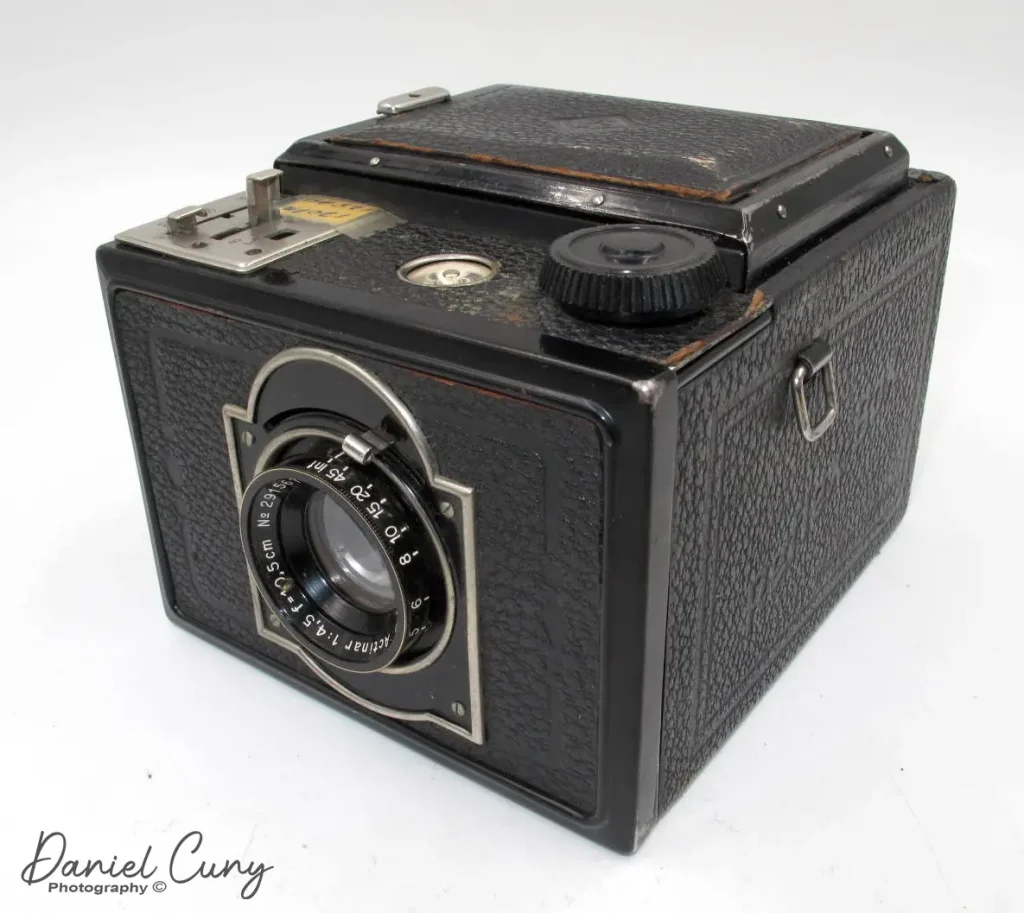
About the KW Reflex Box
The KW Reflex Box gives you 8, 6×9 format exposures on 120 roll film. There is a light-tight chimney that pops up on the top to view the ground glass, which also allows for focusing and composing the photo.
On top of the camera is a spirit level, the film advance knob, and three shutter speeds. The speeds are 1/100, 1/50, & 1/25, along with “B” for time exposure. They are changed when you depress the button and slide the lever to the desired speed. The shutter release is the same lever for adjusting the shutter settings to “B” or “T.” Instead of sliding it to the desired function, you depress it to fire the shutter. There is an opening next to the “T” setting for a cable release, but I don’t see a threaded area. When I depressed it with a pencil, it did fire the shutter.
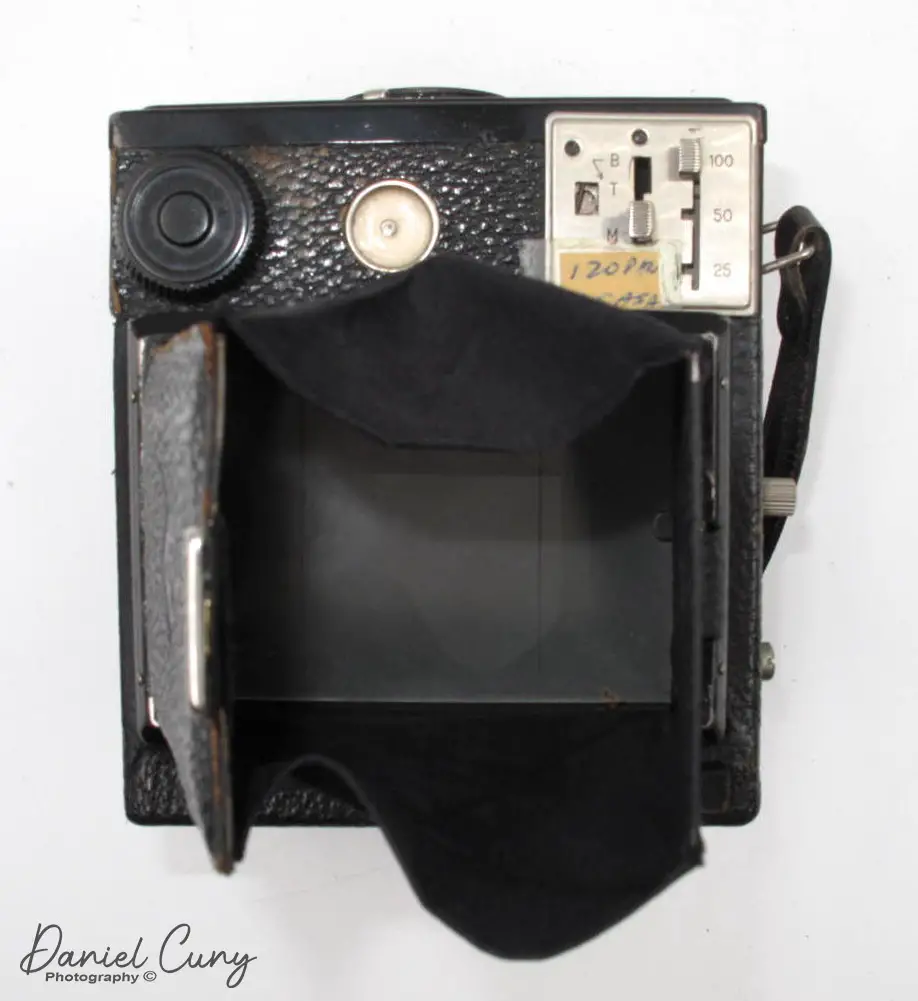
On the front of the KW Reflex Box is the Steinheil Wunchen Actinar 10.5cm f4.5 lens, which focuses from 5′ to infinity. Above the lens is a sliding bar that sets the aperture from f4.5-16. To focus the image, you look through the chimney on the top of the camera, but since the lens stops down manually, you should keep the lens wide open for the brightest viewing for focus, then stop down to the desired aperture before shooting.
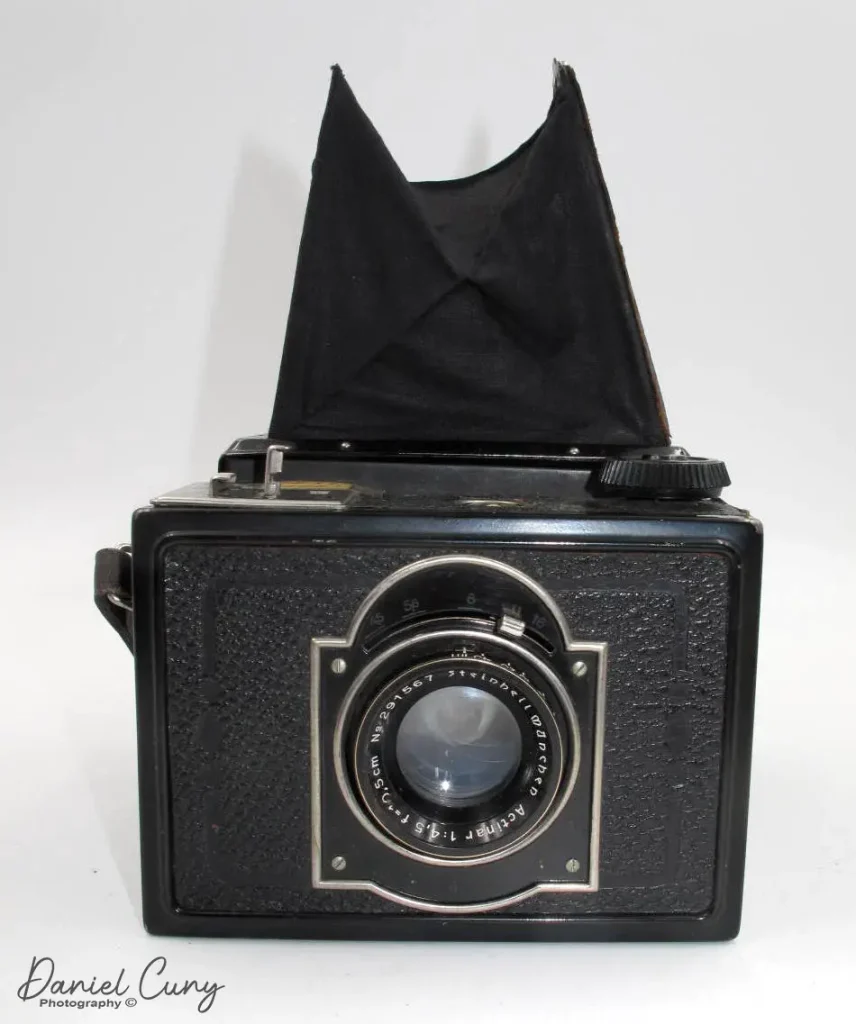
On the right side of the KW Reflex Box is the reflex mirror cocking arm, which also cocks the shutter. You press the lever down, and the mirror comes down for viewing and focusing. The handle is also on the right side of the camera. There is a tripod socket on the bottom and two red windows on the back to see the numbers advance. You’ll need to go two numbers to get to the next frame since you’re shooting 6x9cm.
Photos from the Camera.
When I received the KW Reflex Box, there was a roll of film inside. I always enjoy it when this happens as I get the opportunity to see what the previous owner photographed. When I processed the film, there was one fair image on the roll.
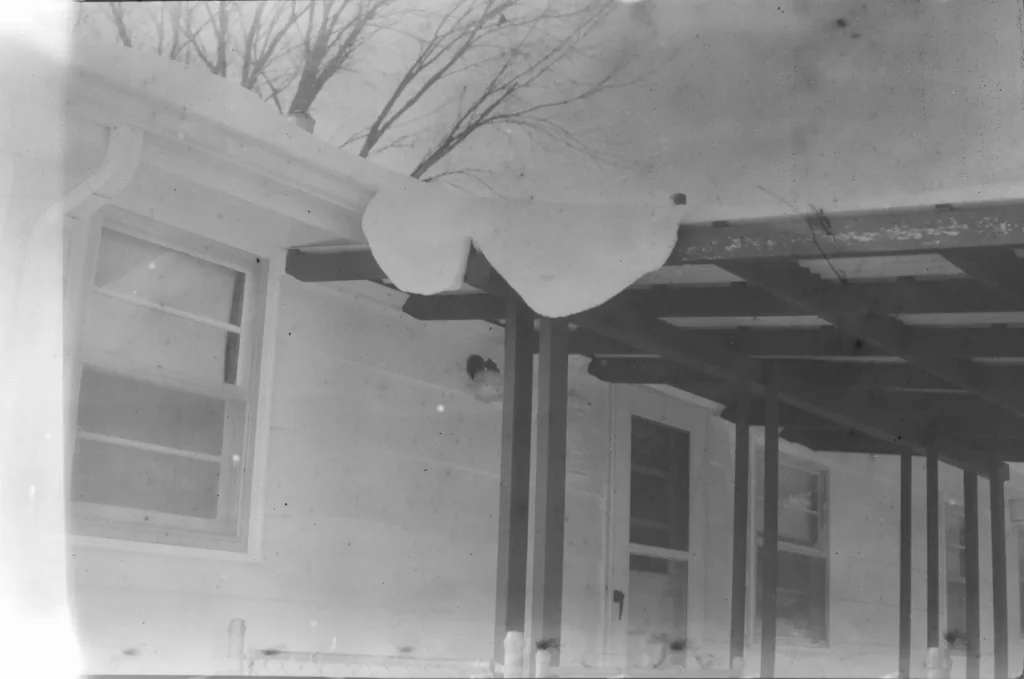
To see how this camera performs, I shot a roll of film through it as well. I’ve included some of the pictures in the post.

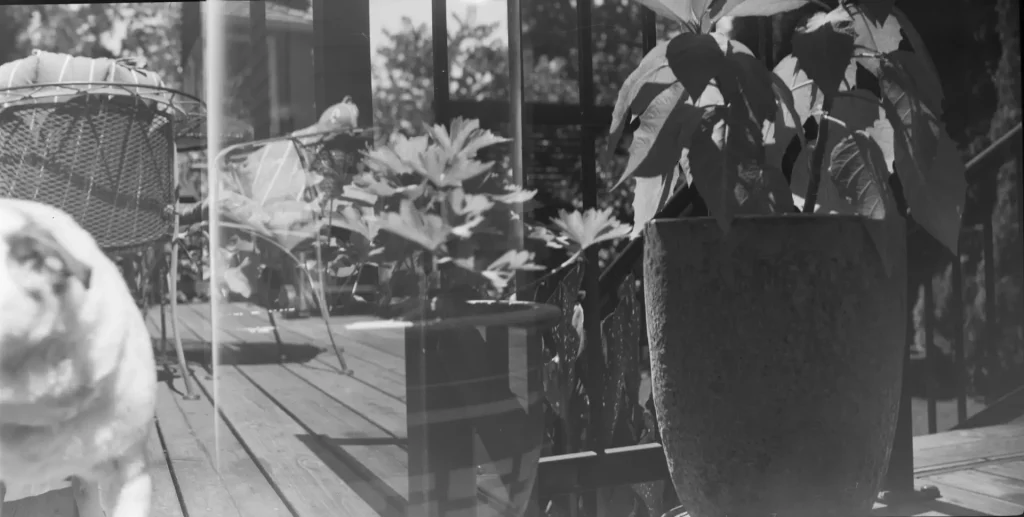
In conclusion, the camera is fun to shoot with, but also one you need to slow down and think about a few things before shooting. To me, this is one of the things I like. Is the lens stopped down after focusing?, Is the camera level? Did I wind two numbers? I hope you try and find one and shot with it when you do.
Share this post:
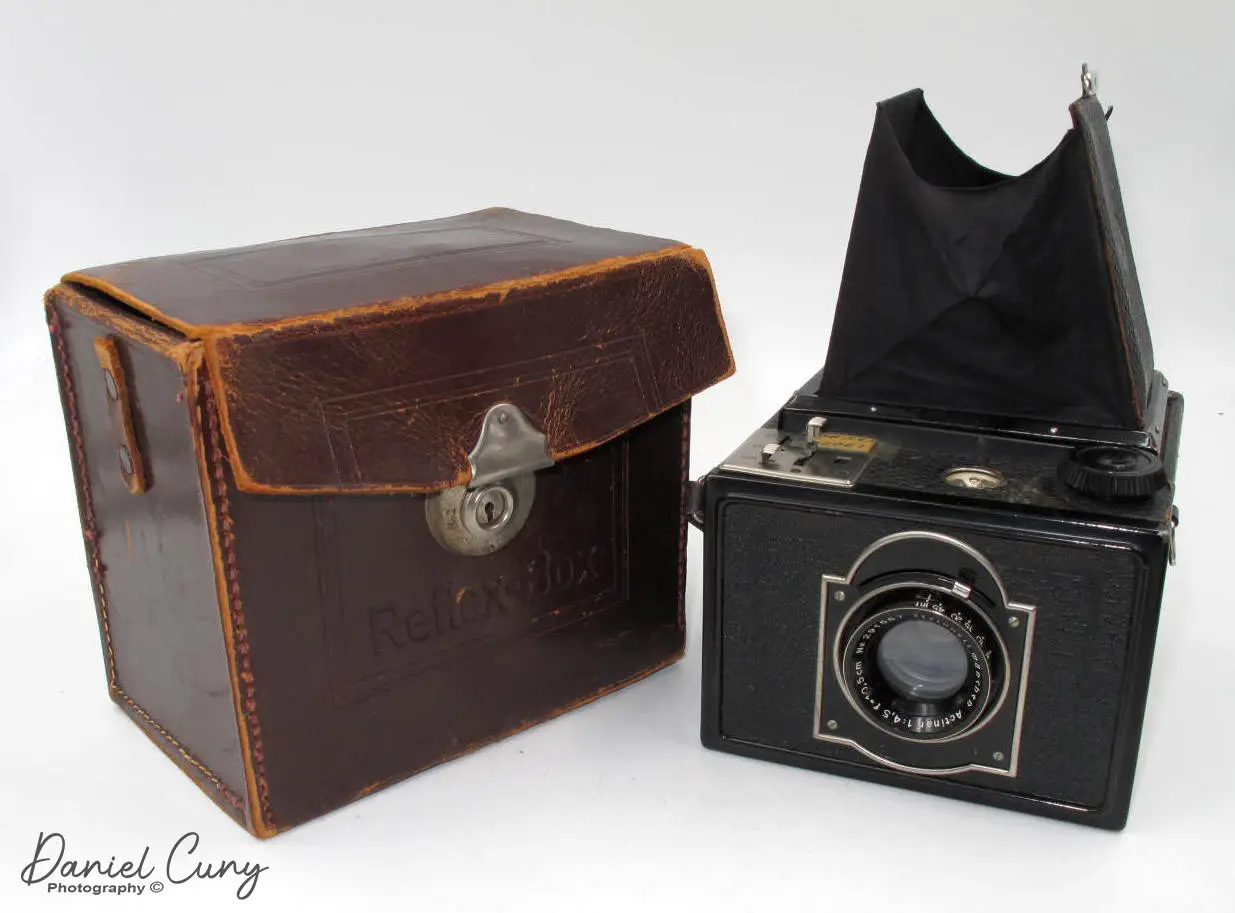








Comments
James T on KW Reflex Box Camera History & Review – By Dan Cuny
Comment posted: 03/10/2020
If there are two red windows, there must at some time have been a 6×4.5 mask to allow 16 frames per film. The oldest 645 cameras pre-date the third row of numbers on the backing paper, so you would use the 6×9 numbers in alternate windows.
Kurt Ingham on KW Reflex Box Camera History & Review – By Dan Cuny
Comment posted: 03/10/2020
You might have mentioned that when you release the shutter it feels/sounds like a freight train passing by.
I wonder how it fit in the market pricewise-what else could you have bought at the time for the same money?
Ken Rowin on KW Reflex Box Camera History & Review – By Dan Cuny
Comment posted: 03/10/2020
Comment posted: 03/10/2020
Sergio Palazzi on KW Reflex Box Camera History & Review – By Dan Cuny
Comment posted: 04/10/2020
Scott Gitlin on KW Reflex Box Camera History & Review – By Dan Cuny
Comment posted: 04/10/2020
Bernhard on KW Reflex Box Camera History & Review – By Dan Cuny
Comment posted: 07/10/2020
i am more interested to adapt the lense of such a camera to modern digital cameras. It is my hobby.
Best regards
Bernhard